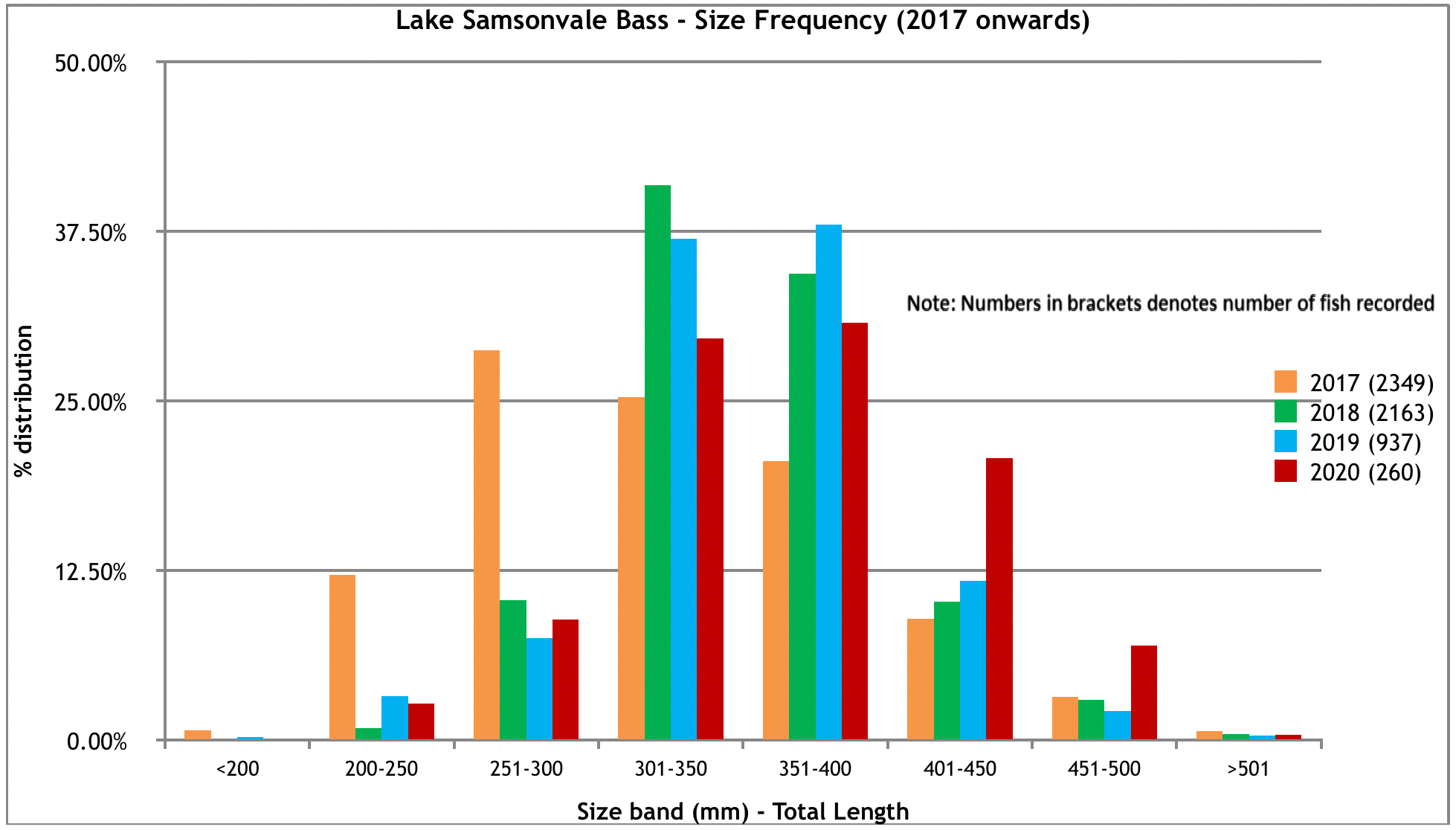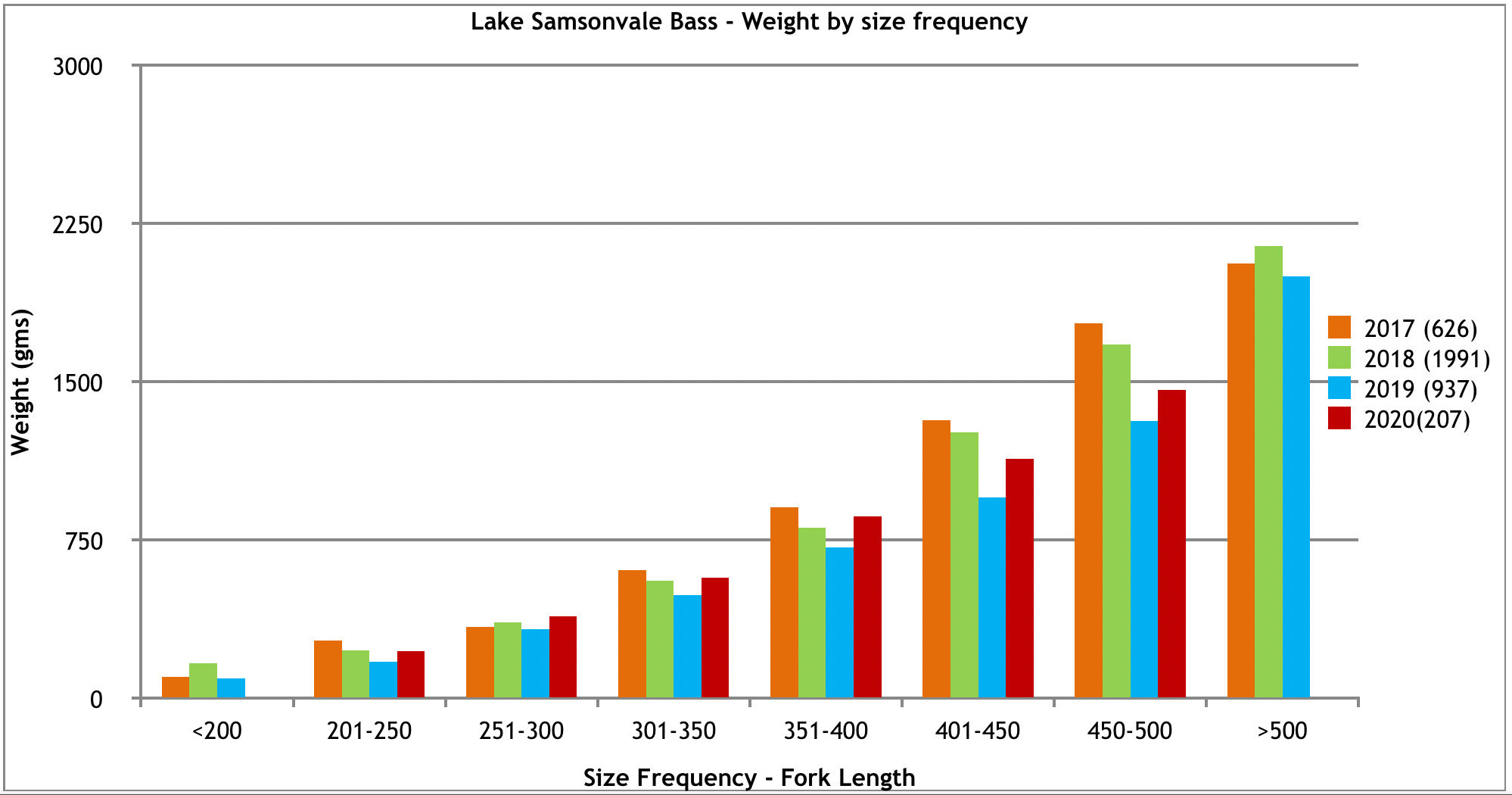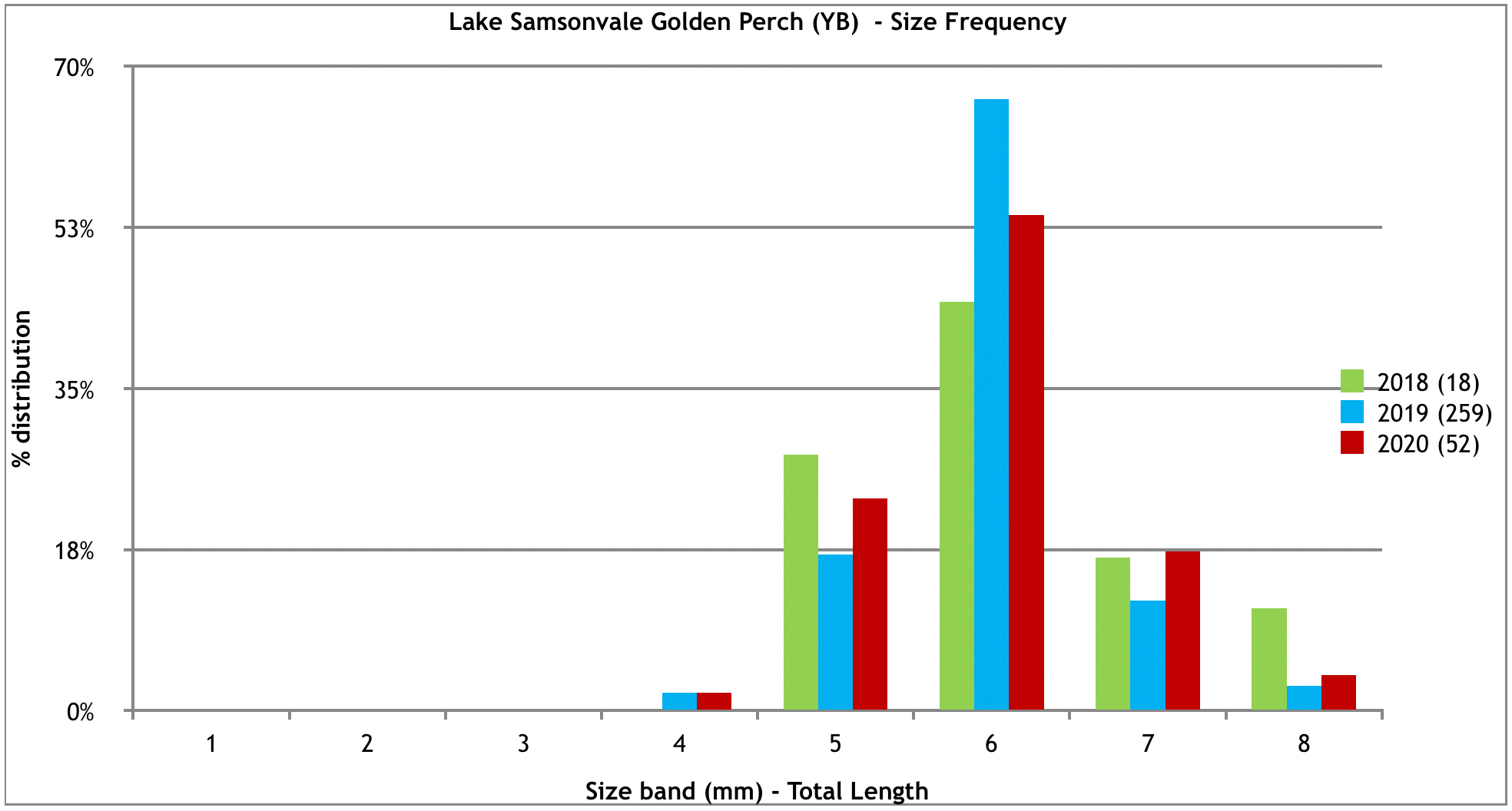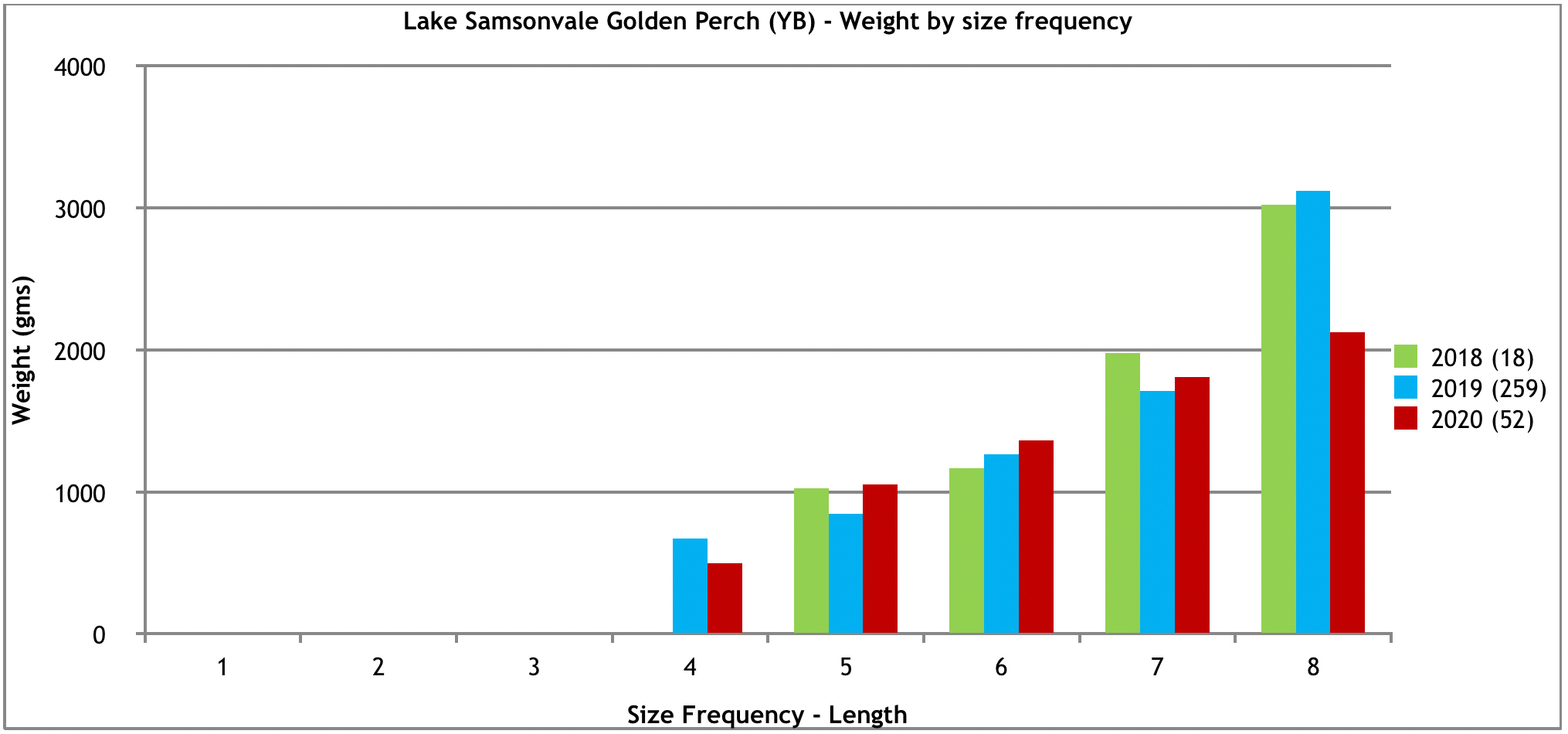Lake Samsonvale Monitoring Program
Monitoring the Health of the fishery
The PRFMA collects data from a variety of sources to monitor the health of the fishery at Lake Samsonvale. This data provides information to guide the stocking program and the impacts of various initiatives to improve the recreational fishery. It also provides the basis for our reporting requirements to the relevant authorities.
The information below describes the type of data collected and how it is presented. We encourage all users of Lake Samsonvale to participate in the data collection programs described below.
Sources of Data
Catch Cards – completed by all Vehicle Permit Scheme (VPS) holders as part of the login/logout process on each outing. These provide information on total catch by species, angler effort, visit frequency and other relevant information
Record sheets with lengths & weights – completed by a small group of PRFMA members and permit holders who measure and weigh their catch throughout the year. These records provide valuable information on the health of the fishery, including catch by size groups, average lengths and weights. This information is supplemented by focussed Survey Events conducted periodically.
Tagging – recaptures of tagged fish provide information on growth and movement of fish. Historically, tagging has been restricted to Bass but Golden Perch and Saratoga are included to gather more information on these species.
Otolith collection – fish otoliths provide definitive data on the age of fish. Just like the age rings on trees, the spacing of the annual growth rings on otoliths provides an insight into the impact of seasonal variations on the growth of the fish. Otoliths are currently collected for Bass and Golden Perch (Yellow Belly)
A research project is currently looking at the collection of fin clips for providing age data and comparing that with data from otoliths.
Saratoga project – a project commenced in recent years to monitor the growth and movement of Saratoga in the lake. Very little is known about this species but as more anglers target the iconic ‘toga, we need to be better informed to guide our stocking policy (quantities, release process etc)
For the latest update on the monitoring program, please visit this link here
The section below illustrates some of the ways in which the data is presented.
Catch Cards.
|
2020 |
2021 |
2022 |
|
| Australian Bass |
17900 |
13340 |
6047 |
| Golden Perch |
903 |
244 |
131 |
| Silver Perch |
15 |
7 |
11 |
| Saratoga |
50 |
25 |
39 |
| Eel-tailed Catfish |
272 |
164 |
184 |
| Tilapia |
46 |
53 |
184 |
| Redclaw |
2517 |
1003 |
7400 |
This table shows the catch by species for a three-year period with data taken from the Catch Cards.
In late 2017, a decision was taken to diversify the fishery. Previously recognised as a Bass fishery, Lake Samsonvale is a very family friendly environment, and it was considered a diverse fishery would be more attractive to a broader audience. With changes to stocking policy, we can now monitor the results of those changes and modify the policy over time. Given that our data does not include catches from Forgan Cove or land based fishing, it is still gratifying to see the large Bass catch as a testimony to the stocking efforts of the PRFMA.
Catch vs Stocking Rate
As expected, the more we stock, the higher the catch. However, this is not always the case as over stocking can lead to the collapse of the fishery. This chart shows the rise in the Bass catch several years after a high stocking in 2014. This data allows us to monitor the “surge” effect of variations in the stocking rate.
Record sheets with lengths & weights
The charts below illustrate the type of information provided by the Record Sheets.
Bass – Catch by size frequency
This chart shows the proportion of the total catch by size frequency “bands”. Note that the 2017 Bass catch is biased towards the smaller end of the frequency range, while 2018 to 2020 figures show a trend to larger fish being caught. This would be consistent with the large stocking in 2014 as these fish move through the expected growth phases.
Bass – Weight by size frequency
This chart shows the average weight of the fish in the size frequency bands. The thing to note here is that the average weight of Bass in the lake had been decreasing from 2017 to 2019 but started to lift again in 2020. Again, our monitoring program provides early warning of trends and corrective action cab be taken if needed.
Golden Perch (Yellow Belly)
While “Yellas” have been stocked for many years, very little data has been collected on the species and so a concerted data collection program has now been commenced. The following charts display the same sort of analysis as the Bass charts above but, with little data from previous years, it is difficult to make comparisons. Hopefully, the data sets will grow over coming years to allow better management of the GP fishery.
GP – Catch by size frequency
The most notable observation of the data is the lack of small fish (< 300mm) in the catch. From limited otolith collection, we do know that Golden Perch grow very quickly in Lake Samsonvale which might explain the limited catch of small fish.
Habitat Enhancement Program
The PRFMA has been working to improve the fishery with the installation of Fish Aggregating Devices (FADs) Information on the catches on these structures is being collected and will be made available in due course. The current concern is that the new FSL of 68% means the FADs will be in much shallower water than originally planned.
A full description of the construction and deployment of the FADs, including a map showing locations, can be found on the PRFMA website www.prfma.com.au under the heading “Habitat Enhancement Program”.
Saratoga Data
With a very limited catch of Saratoga, data analysis is difficult. However, a research project which involves tagging and tracking of Saratoga will hopefully provide more data in future
We welcome your comments/observations on the data presented here, as well as any suggestions on how to improve the monitoring program. A special thanks to the PRFMA members for collecting the data, and to especially Mick Dohnt for diligently maintaining the databases. If any PRFMA members or VPS Permit Holders would like to get involved in the data collection program, please drop us a line at monitoring@prfma.com.au








